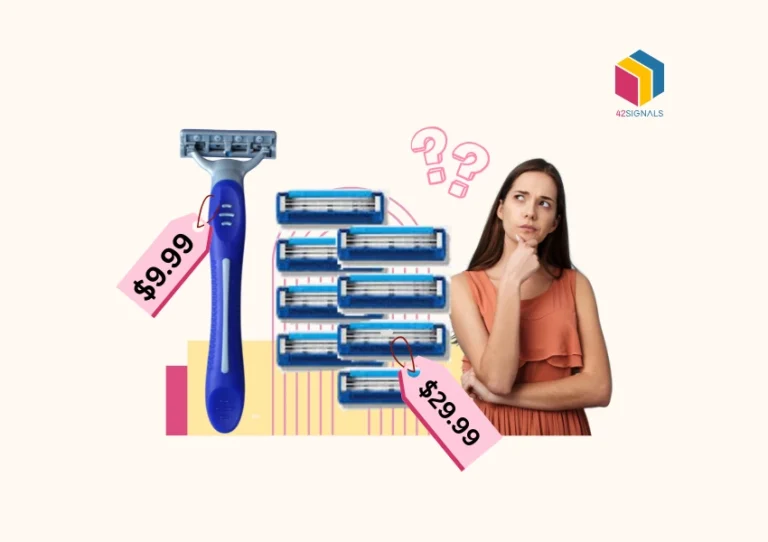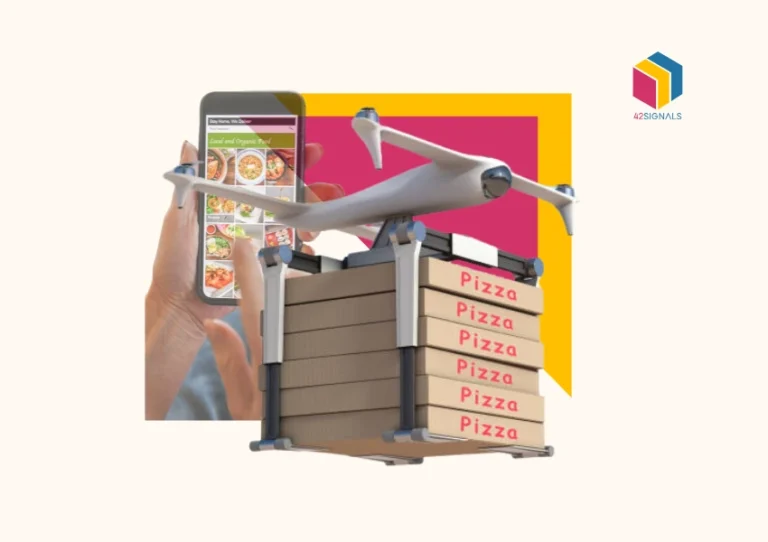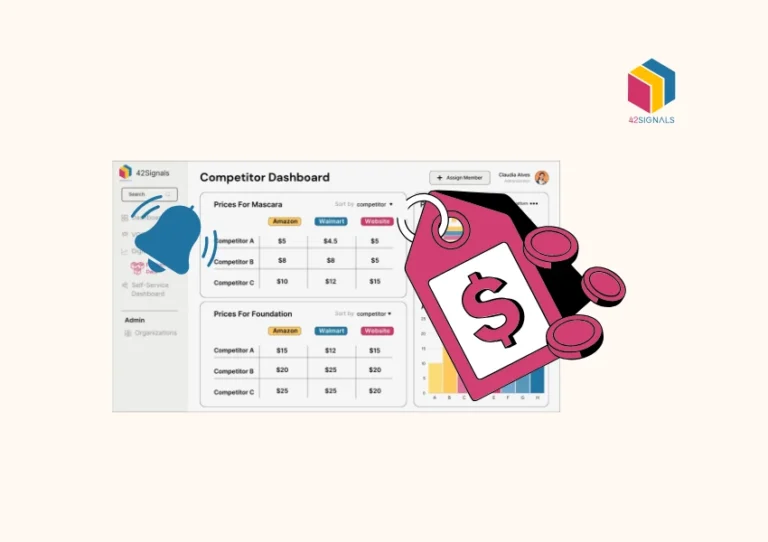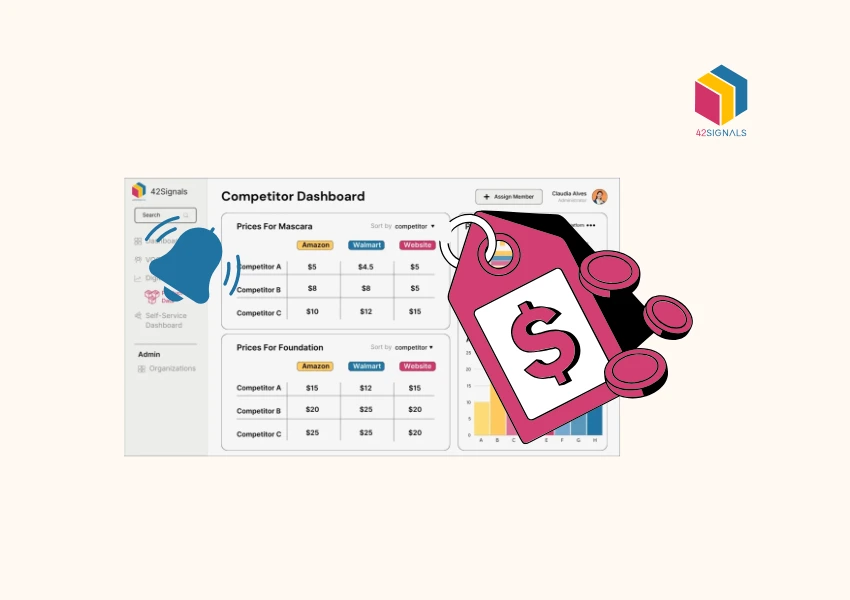** TL;DR ** Drone food delivery has evolved from a sci-fi concept into an operational reality, with companies like Wing, Flytrex, and Amazon Prime Air now using sophisticated autonomous drones to deliver meals and groceries in select U.S. areas, offering unprecedented speed (often under 15 minutes) by flying directly to destinations, thus bypassing traffic and reducing costs and emissions associated with traditional last-mile delivery, though the industry still faces significant challenges including strict FAA regulations, safety concerns, weather limitations, and high infrastructure costs, meaning drones are likely to become part of a hybrid delivery system rather than a full replacement for ground transportation in the near future.
If you’ve watched a sci-fi movie, chances are you’ve seen drones doing impossible things. Ten years ago it would have blown people away, seeing the manufactured capabilities of a drone. Today, it’s reality in many places. Drones went from being used by militaries for surveillance and other covert operations to widespread use by flying enthusiasts to now creating a new category of drone food delivery service.
Drone food delivery has transitioned from a flashy tech demo into a genuine, operational service, and it’s starting to change the way we think about getting our groceries and takeout.

Image Source: Live Mint
This fascinating leap in food delivery technology is arriving at the perfect moment, tapping directly into our culture’s growing obsession with speed. We now live in the era of quick commerce, a term that describes the blistering pace of modern retail, where getting a gallon of milk, a last-minute ingredient for dinner, or a hot pizza delivered in under thirty minutes is not just a luxury, but an expectation. This new standard is reshaping entire business models and now, our very skies.
Let’s look at how these flying machines actually work in the real world, introduce you to the major companies betting big on this technology, and honestly weigh the incredible benefits against the very real challenges that come with launching a new industry into the air.
Download our free quick commerce advantage report
Beyond the Remote Control – What Exactly is Drone Food Delivery?
It’s easy to hear the term and picture a hobbyist’s drone clumsily carrying a burrito. The reality is far more impressive and complex. At its heart, drone food delivery is the use of unmanned aerial vehicles (UAVs)—sophisticated, electrically powered aircraft—to transport food and groceries from a merchant’s location directly to a customer’s designated spot, like their backyard or driveway.
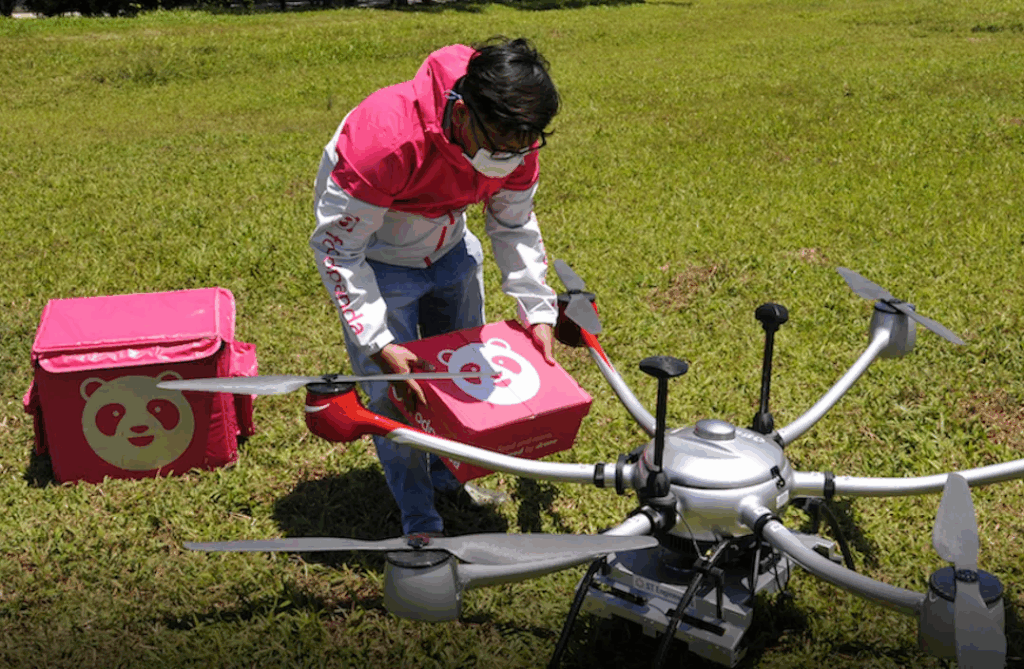
Image Source: Asia Times
These are not your average off-the-shelf drones. The vehicles used for commercial delivery are engineering marvels. They are typically equipped with multiple rotors for stability, advanced GPS for precise navigation, and a suite of sensors including cameras, LiDAR, and radar. These sensors act as the drone’s eyes and ears, allowing it to perceive its environment, avoid obstacles like trees and power lines, and navigate autonomously without a human manually steering it every second of the journey.
This method represents one of the most ambitious and talked-about last-mile delivery solutions. In the logistics world, the “last mile” is the final, most expensive, and often most inefficient leg of a product’s journey—the trip from a local distribution hub to the customer’s front door. It’s the part plagued by traffic jams, missed turns, and weather delays. By taking to the skies, drone delivery aims to solve this problem with a simple, elegant solution: fly over all of it. This creates a direct, point-to-point aerial highway that connects the store to the home, bypassing the tangled web of roads below.
Ready to Take the Next Step?
See how our solutions can help you achieve your goals and drive measurable results.
The Pioneers: Who’s Actually Flying Your Food Today?
This isn’t a theoretical exercise or a pilot program hidden away on a private corporate campus. Real companies are operating real services for real customers right now. Let’s meet some of the key players who are turning this vision into a daily reality.

Image Source: Droneii
First up is Wing, a company that started as a moonshot project within Google’s parent company, Alphabet. Wing has been a true pioneer, methodically testing and refining its service for years. They’ve established operational hubs in places like Christiansburg, Virginia, and Frisco, Texas. Their model involves partnerships with big names like Walmart and DoorDash, integrating drone delivery as an option within the standard ordering apps customers already use. Wing’s drones have a distinct design; they look like a cross between a small plane and a helicopter, allowing them to take off vertically and then fly efficiently forward like an airplane for longer distances.
Then there’s Flytrex, an Israeli-based company that has found a strong foothold in the suburbs of North Carolina and Texas. Flytrex has partnered with fast-casual chains like Chick-fil-A and, again, retail giant Walmart. Their approach often focuses on delivering to backyards, which they promote as a safer and more convenient drop-off point than the front door. To make this work, they rely on a network of what the industry calls dark stores. These are not traditional retail outlets; they are small, local warehouses stocked specifically with the items people order most for rapid online fulfillment. A dark store is the perfect launchpad for a drone fleet, acting as a hyper-local fulfillment center designed entirely for speed.
We can’t talk about this space without mentioning Amazon Prime Air. While their journey has been longer and more complex due to intense regulatory scrutiny and internal development challenges, Amazon’s entry into the market is a massive signal of the sector’s potential. After nearly a decade of development, they finally began limited drone deliveries for prescription medications and other small goods in Lockeford, California, and College Station, Texas, in late 2022. Amazon’s vast resources and relentless focus on customer logistics mean their progress in autonomous delivery will be a major story to watch.

These companies, along with others like Zipline (which honed its technology delivering critical medical supplies in Africa), are providing a crucial proof of concept. They are demonstrating that the technology is not only viable but is already a practical part of daily life for a growing number of Americans.
Download our free quick commerce advantage report
The Journey of Your Aerial Meal – A Step-by-Step Look into Drone Food Delivery
The process seems magical from the outside, but it’s built on a foundation of careful planning and complex coordination. Let’s walk through what happens from the moment you tap “order” to the moment your food is gently lowered from the sky.
Step 1: The Order and The Offer
It all begins familiarly: you open an app like DoorDash or a restaurant’s own platform, browse the menu, and build your cart. When you go to check out, the magic happens. The app checks your delivery address against a geofenced map of approved flight zones. If you’re within one of these zones, an option for drone delivery might appear, often highlighting the super-fast estimated time. You select it, pay, and the behind-the-scenes process kicks into gear.
Step 2: Preparation and Packing
Your order is prepared by the restaurant staff or inside a dedicated dark store. The key here is the packaging. Your food isn’t just tossed into a paper bag. It’s carefully placed into a proprietary, insulated, and often hard-shelled container designed to maintain temperature and secure the contents during flight. This container is then mechanically attached to the drone’s underside or payload system, ensuring it’s locked in and balanced for stable flight.
Step 3: Autonomous Ascent and Navigation
The drone, stationed at its launch site, receives its digital flight instructions. With a quiet whir of its electric motors, it takes off vertically. Once it reaches a safe altitude, it transitions to forward flight, following a precise, pre-programmed path that has been reviewed and approved by regulatory systems. Throughout its journey, the drone’s onboard computer is processing a constant stream of data from its sensors, making tiny adjustments to its course to avoid any unexpected obstacles, all without human intervention. A human operator monitors the fleet from a central command center, but they are not flying each drone manually; they are overseeing the system’s overall health and safety.
Step 4: The Precise Delivery
This is the part that feels most futuristic. In most current systems, the drone does not land at your home. Instead, it identifies the specific GPS coordinates of your delivery point (e.g., the center of your backyard) and begins to hover at a height of around 20 to 30 feet. It then activates a winch mechanism, gently lowering your order on a cable or tether down to the ground. This method, known as a tether delivery, is crucial for safety. It keeps the powerful and spinning rotors of the drone high away from people, pets, and property. Once the payload touches down and is released, the tether retracts, and the drone ascends to return to its base, ready for its next mission.
Why It’s a Big Deal – The Tangible Benefits of Delivery from Above
The move toward drone food delivery isn’t just about the “cool factor.” It’s driven by a powerful set of advantages that solve genuine, pressing problems in our current delivery ecosystem.

- Unmatched Speed and the Rise of Quick Commerce. This is the most obvious benefit. Drones travel in a straight line, unaffected by the obstacles that bog down ground vehicles. A car might have to navigate three miles of winding streets, traffic lights, and left-hand turns. A drone simply flies that three-mile distance directly. This can reduce delivery times from 30-45 minutes to an astonishing 10-15 minutes for many orders. This incredible speed is the ultimate expression of quick commerce, or q-commerce, transforming it from “fast” to “almost instant.”
- Radical Efficiency and Lower Costs. The traditional last-mile delivery model is incredibly expensive. It involves a driver, a vehicle, fuel, insurance, and the time spent navigating between stops. A report by the management consulting firm McKinsey & Company found that this last leg can account for up to 50% or more of the total shipping cost. Drones, being autonomous and electric, dramatically reduce these costs. They don’t require a driver, don’t use gasoline, and can operate nearly continuously with minimal downtime. While the initial investment is high, the potential for long-term savings is significant, and those savings could eventually be passed on to consumers in the form of lower delivery fees.
- A Clear Environmental Win. In an age of growing climate consciousness, the environmental benefit is a major plus. Electric drones produce zero direct emissions during their flight. While the electricity they use to charge has its own footprint, it is still far less than that of a fleet of gas-powered cars constantly starting and stopping in traffic. Furthermore, they are remarkably quiet compared to trucks and motorcycles, contributing to a reduction in noise pollution—a welcome change for any residential neighborhood.
- Enhanced Accessibility and Reach. Drones have a unique ability to serve areas that are challenging for traditional delivery. This includes densely packed urban areas where finding parking is a nightmare for drivers, large residential complexes with confusing layouts, and even more remote or rural homes with long, difficult-to-navigate driveways. This tech innovation can help level the playing field, providing equal access to rapid delivery services for communities that were previously harder to serve efficiently.
Ready to Take the Next Step?
See how our solutions can help you achieve your goals and drive measurable results.
The Hurdles on the Horizon – Challenges and Concerns
For all its promise, the path to a sky filled with delivery drones is not without its very real obstacles. Widespread adoption hinges on successfully addressing these significant challenges.
The Regulatory Maze in Drone Food Delivery
This is arguably the biggest hurdle. The Federal Aviation Administration (FAA) has the critical job of ensuring the safety of the entire national airspace. Integrating thousands of autonomous drones into skies shared with passenger planes, helicopters, and other aircraft is an immensely complex task. Current regulations often require drones to operate within the operator’s visual line of sight (BVLOS operations require special waivers), which severely limits their range and scalability. Creating a comprehensive regulatory framework that allows for safe, large-scale operations is a slow and meticulous process that all companies in this space must navigate.
Winning Public Trust and Ensuring Safety
Let’s face it: the idea of heavy machines flying over our homes and neighborhoods makes people nervous. Valid concerns exist around privacy, given that drones are equipped with cameras for navigation. People worry about noise, even from relatively quiet electric models, and most of all, they worry about safety. What happens if a drone has a mechanical failure? What if it drops its payload? Companies must invest heavily in redundant safety systems (like backup rotors and parachutes) and transparent public education campaigns to build the essential trust required for community acceptance.
The Weather Problem
Drones are machines, and machines have limitations. While they are built to handle a range of conditions, operations can be grounded by high winds, heavy rain, ice, or thick fog. This inherent weather dependency means that drone delivery cannot be a standalone solution; it must be part of a hybrid model that includes ground-based delivery for times when the skies are unfriendly. This reliability factor is a key practical consideration.
The High Cost of Infrastructure in Drone Food Delivery
Building this future isn’t cheap. Companies must invest millions in developing and certifying the drone technology itself, establishing networks of launch sites and dark stores, building secure command and control centers, and hiring teams of operators and maintenance technicians. The business model for achieving profitability with autonomous delivery is still being proven at a large scale, and it will require significant capital and time to build out the necessary infrastructure.
What’s Next? The Future of Delivery and Quick Commerce

Given these challenges, what does the realistic future look like for drone food delivery? It’s unlikely that drones will completely replace delivery drivers anytime soon. Instead, we are moving toward a sophisticated hybrid model.
Drones will become the go-to option for extreme speed on small, urgent orders—the “I need a coffee and a sandwich now” request. Meanwhile, traditional drivers in vehicles will continue to handle larger grocery orders and deliveries during inclement weather. This multi-modal approach creates a more resilient, efficient, and flexible overall delivery network.
The infrastructure of quick commerce will evolve in tandem. The strategic placement of dark stores and micro-fulfillment centers will become even more critical, as these hubs will serve as the nerve centers for both ground and aerial last-mile delivery solutions. We can expect them to become more automated, with robots inside preparing orders for both human drivers and drones to pick up and deliver.
The technology itself will continue to advance. Drones will benefit from improvements in battery technology, allowing for longer flight ranges and the ability to carry slightly larger payloads. Their sense-and-avoid systems will become even more sophisticated, potentially using artificial intelligence to predict the movement of birds or other drones. Regulatory bodies like the FAA are actively working on the next generation of rules, known as the Beyond Visual Line of Sight (BVLOS) rulemaking, which will be the key that unlocks true, widespread scalability for the entire industry.
According to the FAA’s own data, the skies are already getting busier. There are over 860,000 drones registered in the U.S. for commercial and recreational use, a number that has been steadily growing year over year. This indicates a gradual but inevitable normalization of unmanned flight in our national airspace.
Download our free quick commerce advantage report
A Change in the Air with Drone Food Delivery
Drone food delivery has made the decisive leap from a captivating concept to an operational service. It is a powerful tech innovation that speaks directly to our modern demands for speed, convenience, and efficiency, while also offering compelling answers to economic and environmental challenges. The journey ahead is not without its turbulence—regulatory, technological, and social hurdles remain.
Yet, the progress is undeniable. The companies operating today are providing invaluable data, building operational experience, and slowly acclimating the public to this new normal. It may be several years before the hum of a delivery drone is a common sound in every major city, but the foundation for that future is being meticulously laid today.
The next time you place an order and find yourself wondering how it could possibly get to you any faster, just remember—the solution is evolving, and it’s not just on the roads. It’s in the air above, quietly and efficiently charting a new course for how we get what we need. The future of delivery is not just coming; in many places, it is already here, one flight at a time.
If you liked this article, read –
Amul’s Dominance on Quick Commerce: A Multi-Category Assortment Masterclass
Potential Impact of 2025 Trump Tariffs on US E-commerce: Pricing, Sourcing & Consumer Costs
The Labubu Frenzy: How a Mysterious Monster Became the $2B Collectible Empire
How Detailed Makeup Product Insights Helped Capture 20% Market Share in India
Frequently Asked Questions
Yes, drones can be used for food delivery. Companies like Amazon (Prime Air), Wing, Flytrex, and DoorDash have already launched pilot programs or limited services where drones autonomously deliver meals or groceries to residences and nearby locations
Drone delivery in India is technically legal, but still very restricted. As of now, regulations don’t allow widespread autonomous drone operations beyond the pilot’s visual line of sight (BVLOS). Though the government granted conditional BVLOS trial permissions to some operators in 2021, a robust regulatory framework enabling long-distance drone logistics is still under development.
There’s no single “best” drone for food delivery, since suitability depends on criteria like load capacity, flight range, and operating autonomy. Companies like Zipotle (via Zipline), Wing, Flytrex, and Meduan have developed drones capable of carrying anywhere from 2 to 5 kg over multiple kilometers—ideal for quick local deliveries.

